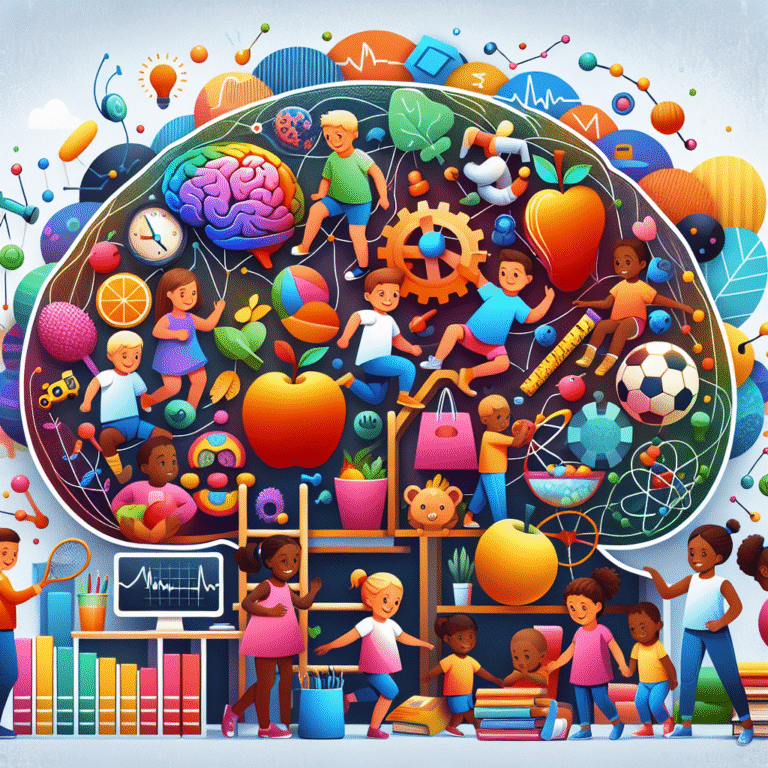
Inside the Consumer’s Mind: The Ultimate Intersection of Behavioral Psychology and Marketing
Introduction: Unlocking the Secrets of Consumer Behavior
In a world where choices abound and attention spans wane, understanding what drives consumer behavior has never been more critical. The digital age, brimming with endless options, requires marketers not just to sell products but to connect with their audience on a psychological level. This brings us to a fascinating exploration: Inside the Consumer’s Mind: The Intersection of Behavioral Psychology and Marketing. By diving deep into the intricacies of human behavior, businesses can craft strategies that resonate, engage, and convert. Let’s embark on this journey to uncover the powerful tactics that merge psychology with marketing, offering insights that can redefine how brands interact with customers.
The Foundation of Behavioral Psychology in Marketing
Understanding Behavioral Psychology
Behavioral psychology, at its core, examines how individuals respond to their environment and what factors influence their decision-making processes. It amalgamates insights from various disciplines—including psychology, sociology, and marketing—to paint a comprehensive picture of consumer behavior. This intersection is crucial for marketers seeking to optimize their efforts and enhance customer connections.
Why Behavioral Psychology Matters in Marketing
Marketers equipped with a solid understanding of behavioral psychology can influence consumer behavior in profound ways. For instance, knowledge of cognitive biases—like the anchoring effect, availability heuristic, or loss aversion—enables brands to frame their messages, products, and pricing strategies more effectively. This understanding is not just theoretical; it has tangible implications for conversion rates, customer loyalty, and brand reputation.
Key Psychological Principles for Marketers
| Principle | Description | Application in Marketing |
|---|---|---|
| Anchoring Effect | The reliance on the first piece of information encountered. | Setting a higher initial price to make subsequent prices seem lower. |
| Social Proof | The tendency to trust the actions of others. | Showcasing customer reviews and testimonials as validation. |
| Scarcity | The perception that limited availability increases desirability. | Creating limited-time offers to drive urgency in purchasing. |
| Loss Aversion | The fear of loss outweighs the prospect of gains. | Framing promotions to highlight potential losses from inaction. |
| Cognitive Dissonance | The discomfort of holding conflicting thoughts or beliefs. | Offering clear post-purchase support to reinforce buyer decisions. |
These principles are merely the tip of the iceberg but illustrate the immense potential of applying psychological theories in marketing strategies.
Real-World Applications: Case Studies
Case Study 1: The Starbucks Experience
Starbucks is a quintessential example of effectively integrating behavioral psychology into its marketing approach. Their success lies not just in quality coffee but in how consumers feel. By creating a "third place" between home and work, Starbucks effectively taps into social proof and emotional engagement.
- Relevance: Their rewards program leverages the principle of loss aversion—customers don’t want to miss out on points, which encourages repeat visits.
- Insight: By prioritizing customer experience and emotional connection over mere transactions, Starbucks demonstrates how understanding consumer psychology fosters loyalty.
Case Study 2: Amazon’s Personalized Recommendations
Amazon has revolutionized online shopping through its data-driven marketing strategies, heavily influenced by behavioral psychology. By using algorithms that analyze browsing and purchasing behavior, Amazon provides tailored recommendations that feel personal.
- Relevance: This strategy utilizes the psychological principle of the availability heuristic, where users are more likely to choose items they are already familiar with or have seen before.
- Insight: Personalization not only enhances customer satisfaction but also increases sales, illustrating the importance of being attentive to consumer preferences.
Case Study 3: Airbnb’s Trust Mechanism
Airbnb transformed the hospitality industry by focusing on building trust through social proof and community feedback. By displaying user ratings and reviews prominently, Airbnb reduces the perceived risk for users booking accommodations.
- Relevance: This technique capitalizes on social proof; the more reviews present, the more likely potential customers are to follow suit.
- Insight: Establishing trust and reducing uncertainty through shared experiences can significantly influence consumer decisions, proving the value of psychological principles in marketing.
Integrating Insights into Marketing Strategies
Creating Compelling Content
To effectively engage consumers, marketers must create content that resonates. If we think Inside the Consumer’s Mind: The Intersection of Behavioral Psychology and Marketing, we realize that storytelling is key. Content that evokes emotion, uses relatable characters, or highlights shared experiences can forge deeper connections.
- Action Point: Use imagery and narratives that resonate with target demographics, aligning brands with core values and experiences of consumers.
Enhancing User Experience (UX)
Good UX is about more than just functionality; it’s about understanding consumer behavior. By applying behavioral psychology principles, brands can craft user experiences that flow intuitively, encouraging desired actions.
- Action Point: Conduct user testing to identify pain points and how psychological principles can alleviate these issues, improving satisfaction and retention.
Pricing Strategies
The way products are priced can profoundly affect consumer perception. Leveraging principles like the anchoring effect creates perceived value and can sway purchasing decisions.
- Action Point: Experiment with different pricing formats, such as decoy pricing or bundling, to see what resonates best with customers.
Building Brand Loyalty
Understanding what motivates repeat purchases is crucial for brand loyalty. Techniques that emphasize community and belonging tap into the human need for connection, enhancing loyalty programs.
- Action Point: Foster a community around your brand by engaging customers through social media, newsletters, and events.
Conclusion: Driving Consumer Behavior through Psychology
As we have explored throughout this article, Inside the Consumer’s Mind: The Intersection of Behavioral Psychology and Marketing reveals critical pathways to success in an increasingly complex marketplace. By merging psychological insights with marketing tactics, brands can thrive by better understanding their consumers. This is not just about selling products; it’s about creating connections that endure and evolve over time.
An Inspirational Takeaway
The true power of marketing lies in empathy—the ability to understand and respond to the emotional and psychological triggers that shape consumer choices. By harnessing the principles of behavioral psychology, brands are not just selling; they are building relationships.
FAQs
1. How can behavioral psychology improve my marketing strategy?
Behavioral psychology provides insights into consumer motivations and decision-making processes, allowing marketers to craft more compelling messages and experiences that resonate with their audience.
2. What are some key psychological principles to consider in marketing?
Important principles include the anchoring effect, social proof, scarcity, loss aversion, and cognitive dissonance. Each can be applied in various marketing strategies to enhance effectiveness.
3. Can you provide an example of a brand successfully using these techniques?
Starbucks effectively uses the concept of emotional engagement and loyalty programs to create a community-centered experience, thereby driving traffic and repeat purchases.
4. What role does personalization play in consumer decisions?
Personalization leverages data to tailor recommendations and communications, invoking familiarity and reducing decision fatigue, which can significantly increase conversion rates.
5. How can I create a more engaging content marketing strategy?
Focus on storytelling, address consumer pain points, and use psychological triggers to evoke emotions, ensuring the content speaks directly to the inside of the consumer’s mind.
Armed with these insights and strategies, marketers can take a proactive approach in navigating Inside the Consumer’s Mind: The Intersection of Behavioral Psychology and Marketing, creating campaigns that truly resonate and drive success.















